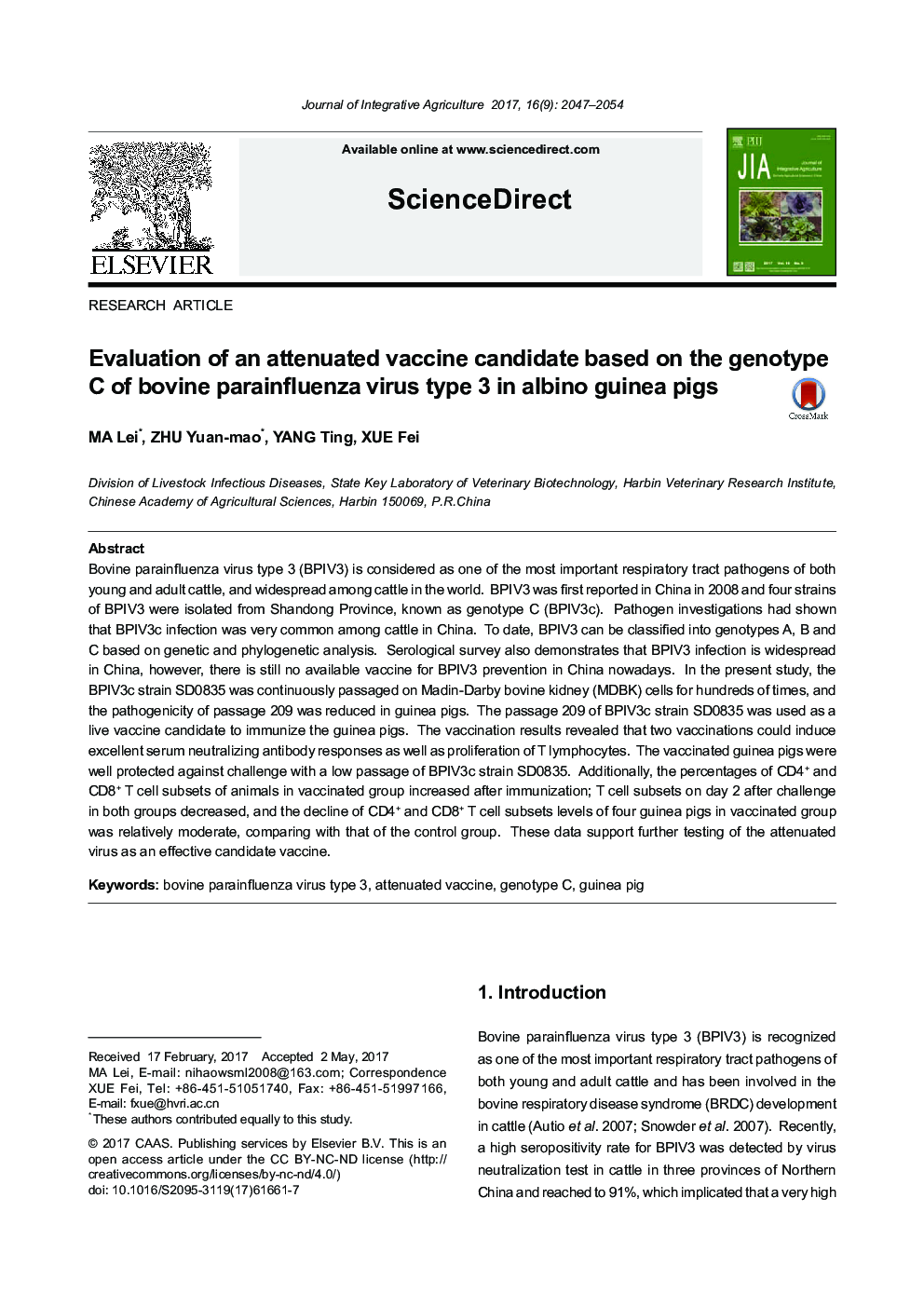| Article ID | Journal | Published Year | Pages | File Type |
|---|---|---|---|---|
| 8875877 | Journal of Integrative Agriculture | 2017 | 8 Pages |
Abstract
Bovine parainfluenza virus type 3 (BPIV3) is considered as one of the most important respiratory tract pathogens of both young and adult cattle, and widespread among cattle in the world. BPIV3 was first reported in China in 2008 and four strains of BPIV3 were isolated from Shandong Province, known as genotype C (BPIV3c). Pathogen investigations had shown that BPIV3c infection was very common among cattle in China. To date, BPIV3 can be classified into genotypes A, B and C based on genetic and phylogenetic analysis. Serological survey also demonstrates that BPIV3 infection is widespread in China, however, there is still no available vaccine for BPIV3 prevention in China nowadays. In the present study, the BPIV3c strain SD0835 was continuously passaged on Madin-Darby bovine kidney (MDBK) cells for hundreds of times, and the pathogenicity of passage 209 was reduced in guinea pigs. The passage 209 of BPIV3c strain SD0835 was used as a live vaccine candidate to immunize the guinea pigs. The vaccination results revealed that two vaccinations could induce excellent serum neutralizing antibody responses as well as proliferation of T lymphocytes. The vaccinated guinea pigs were well protected against challenge with a low passage of BPIV3c strain SD0835. Additionally, the percentages of CD4+ and CD8+ T cell subsets of animals in vaccinated group increased after immunization; T cell subsets on day 2 after challenge in both groups decreased, and the decline of CD4+ and CD8+ T cell subsets levels of four guinea pigs in vaccinated group was relatively moderate, comparing with that of the control group. These data support further testing of the attenuated virus as an effective candidate vaccine.
Related Topics
Life Sciences
Agricultural and Biological Sciences
Agricultural and Biological Sciences (General)
Authors
Lei MA, Yuan-mao ZHU, Ting YANG, Fei XUE,
